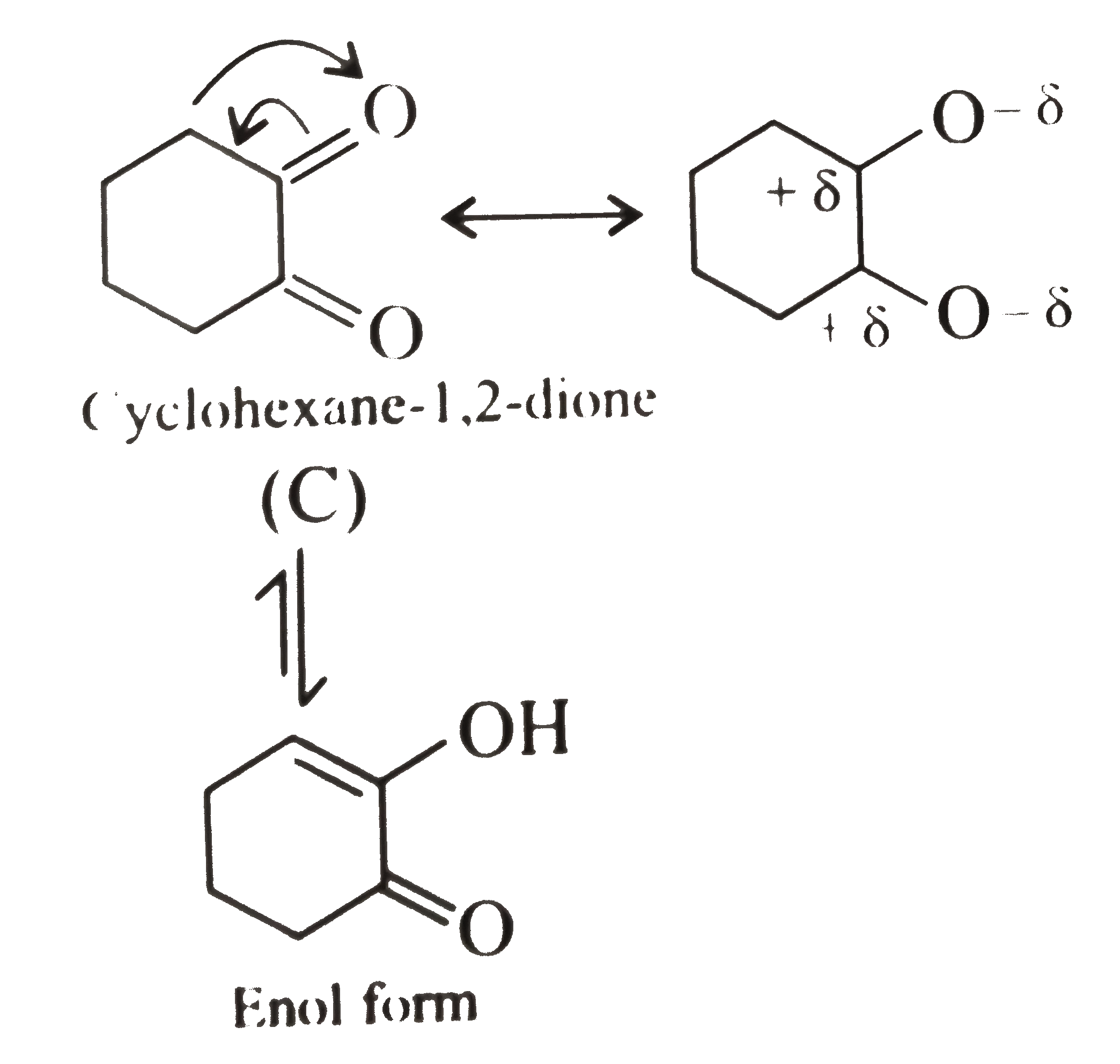Explain the following:
I. Which of the following is more easily enolised?
a. Cyclobutenone 
b. Triketo cyclobutane 
II. Why are keto forms of 2-pyridinol and 4-pydridinol more stable than enol form?
III. Why is keto form generally much stable than enol form?
IV. Why is enol content of butane −2,3 dione(biacetyl) (A) slightly higher than that of butan-2 one (B) and much less than that of cyclohexane −1,2− dione(C)
Video Solution
Text Solution
I

Doesn't enolise because its enol is a flat ring with 4nπ¯e(i.e.,4π¯e's,n=1) and is antiaromatic

Enolises because its enol has (4n+2)π¯e's(i.e.,2π¯e's,n=0) and is stabilised by aromaticity
II. It is due to the intermolecular H−bonding.


III. The resonance energy of (C=O) group is greater than that of the enol.

Moreover, H atom attached to heteroatoms (N,O,S,etc) as in enol form, is more acidic than (C−H) bonds as in the keto form, so equilibrium always favours the side with the weaker acid, in this case the keto form.
In keto form, the less EN(electronegative) C atom is more reactive site but the site with more negative charge (i.e, OΘ) is more attracted to the cation present (i.e., H⊕) and forms enol, thereby lossing the keto reactivity.
IV 
In biacetyl (A) adjacent (C=0) groups destabilises the molecule due to electrostatic repulsion of the similar charges on the O atom of (C=O), but the molecule relieves some of this electrostatic repulsion by acquiring
anti-conformation 
Some repulsion is further relieved in the enol form but enol content is still small because this relief occurs at the expence of loss of (C=O) resonance energy.

In butan-2-one (B), no other factor except the loss of resonace energy occurs during enolisation.

In cyclohexane -1,2− dione (C), the cyclohexane rings is rigid and the −δ charge on the adjacent (C=O) groups is in syn-position. Therefore, this molecule relieves its electrostatic repulsion only by the enolisation of one of the (C=O) groups

Thus, the enol content of (A) is slightly higher than that of (B) but much less than (c).
|
Topper's Solved these Questions
- ISOMERISMBOOK - CENGAGE CHEMISTRYCHAPTER - ISOMERISMEXERCISE - Example
15 Videos
- ISOMERISMBOOK - CENGAGE CHEMISTRYCHAPTER - ISOMERISMEXERCISE - Exercise
19 Videos
- IONIC EQUILIBRIUMBOOK - CENGAGE CHEMISTRYCHAPTER - IONIC EQUILIBRIUMEXERCISE - Archives Subjective
28 Videos
- NCERT BASED EXERCISEBOOK - CENGAGE CHEMISTRYCHAPTER - NCERT BASED EXERCISEEXERCISE - Chemical Equilibrium
72 Videos
Similar Questions
Knowledge Check
Which of the following will not form an enolate?
A B
B C
C D
D
Which of the following will give more enol contents ?
 AIBIICIIIDIV
AIBIICIIIDIVWhich of the following will give more enol contents ?
 AIBIICIIIDIV
AIBIICIIIDIV
In which of the following keto from is more dominating than enol from :
View SolutionWhich of the following has greater enol content than keto counterpart?
View SolutionWhich of the following compounds have higher enolic content than Keto content:
View SolutionWhich of the following compounds have higher enolic content than keto content
View SolutionIn which of the following the enol form is dominant over keto form?
View Solution